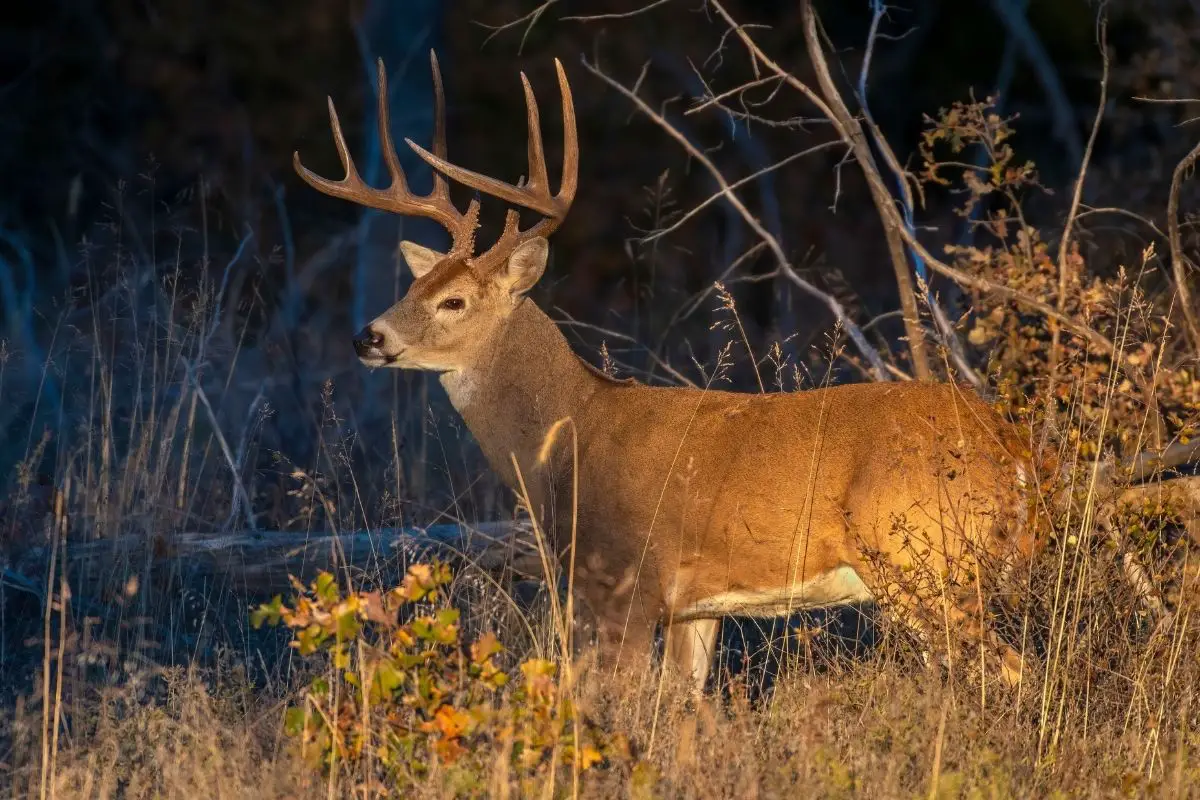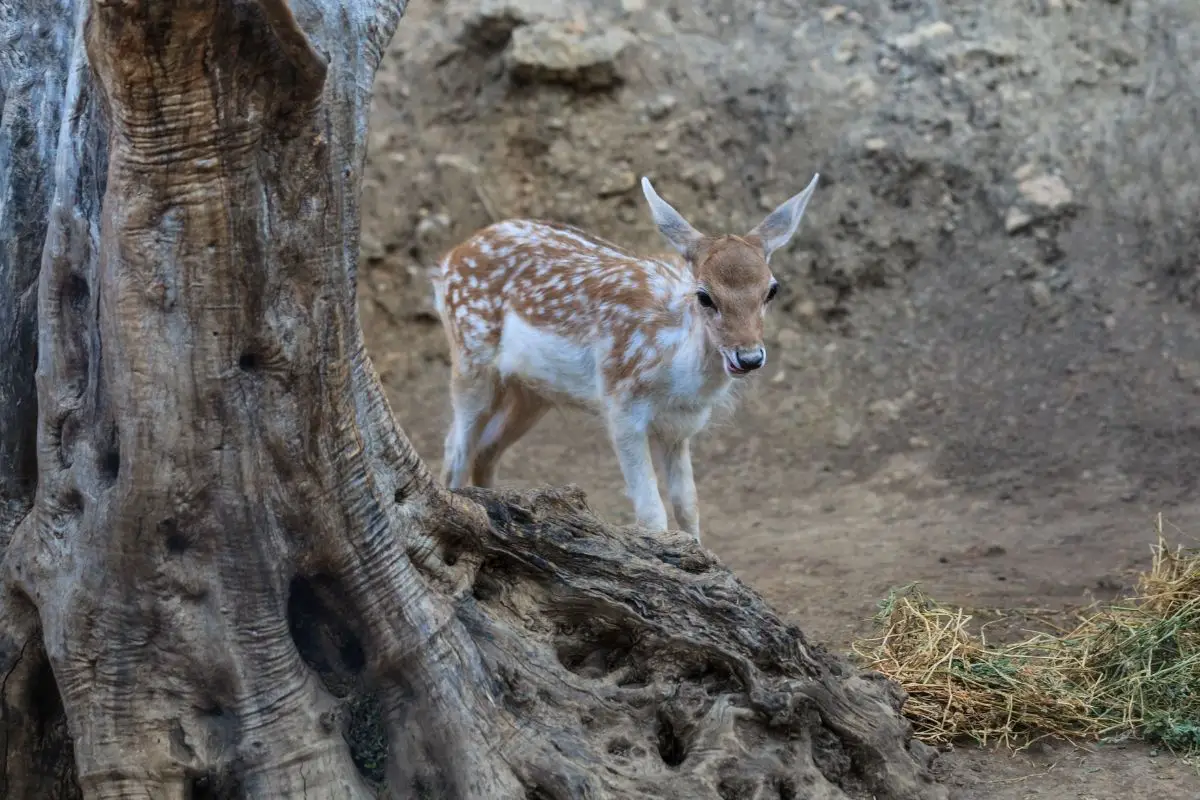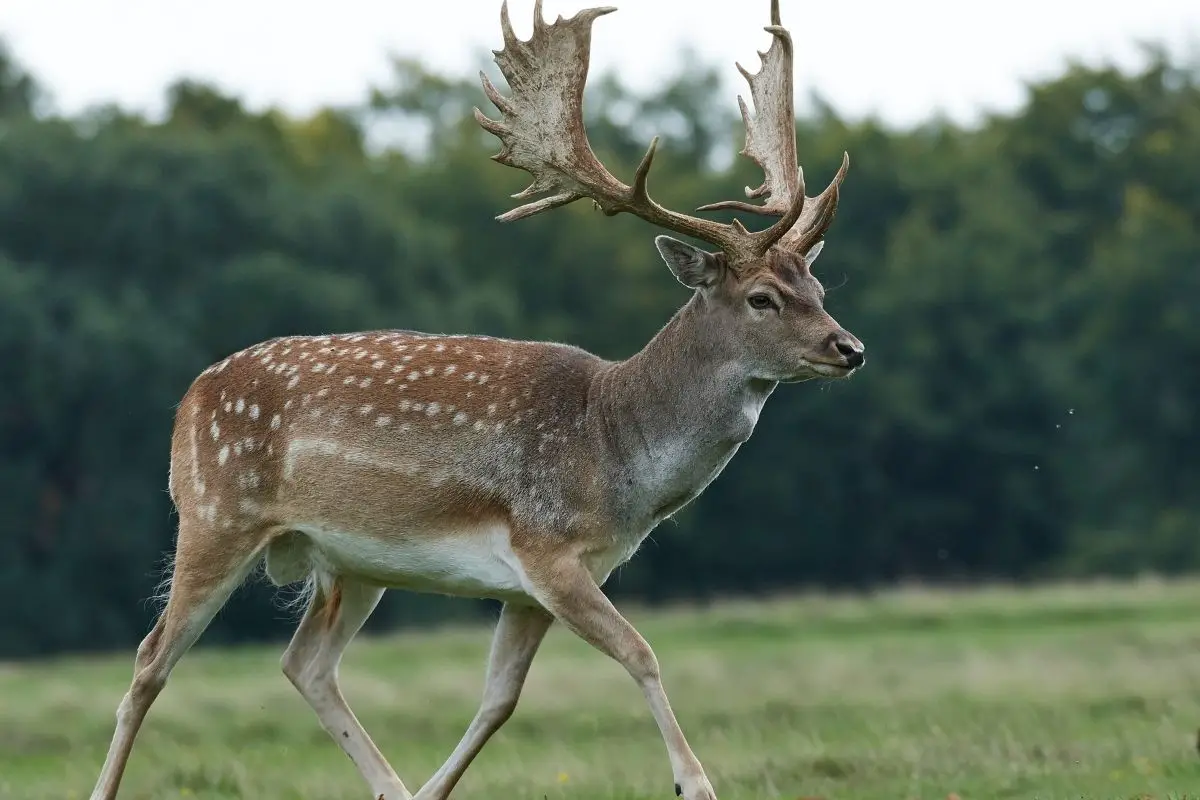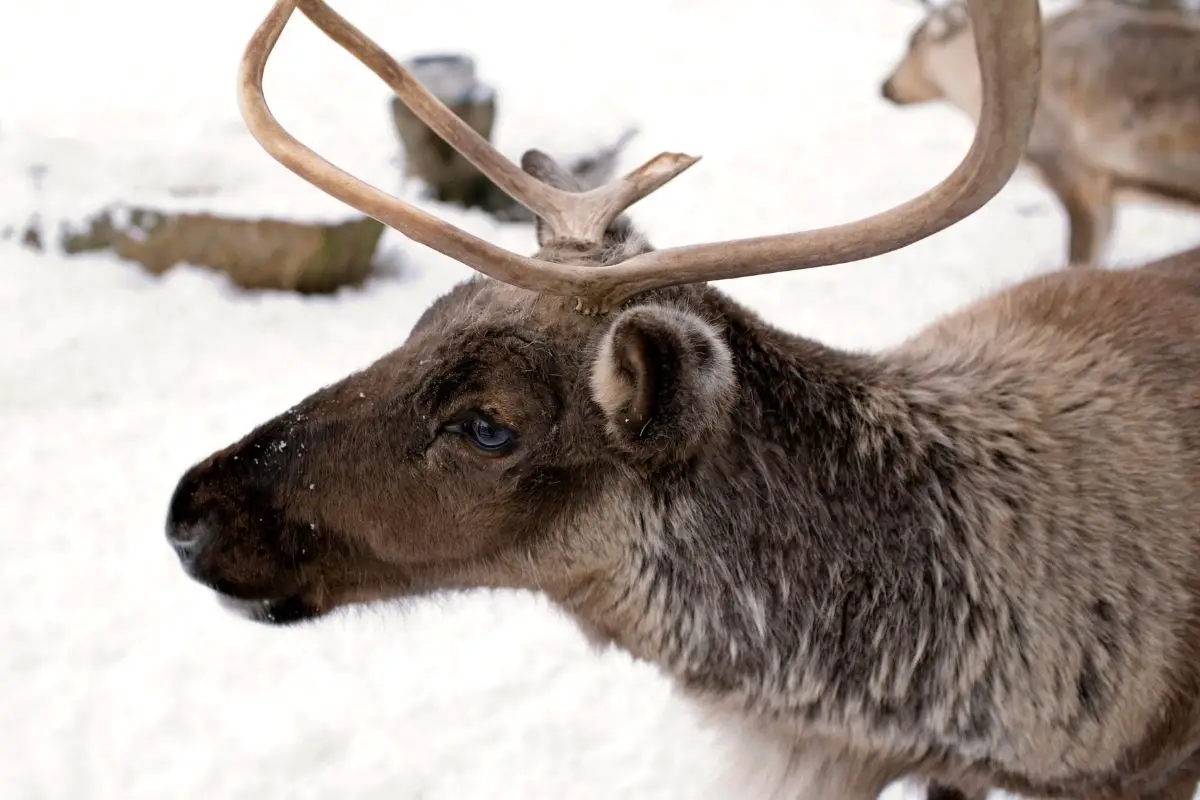
Let’s start by acknowledging that there are more than 50 species of deer (Cervidae) worldwide. It would take a tremendous lot of words to tell you much about all of them. So, I will try to tell you a lot about some deer and a little about the rest of them.
1. White Tailed or Whitetail Deer (Odocoileus virginianus)

The deer most familiar to most Americans and to anyone who’s ever seen Bambi is the White Tailed Deer, the smallest member of the North American deer family. More than two dozen subspecies of the Whitetail, most of them also in North America. The way to recognize a Whitetail is to startle it.
It will run away from you and, as it does, lift its tail with a white underside as a warning to other deer. The other deer, which process images and movement far more quickly than we do, will see the tail and also run. White-tailed deer forage to eat large amounts of food, including legumes that forage on other plants, such as shoots, leaves, and grasses.
They also eat acorns, fruit, and corn. Their multi-chambered stomachs allow them to eat some things we can’t, such as poisonous mushrooms and poison ivy. They also eat hay, grass, white clover, and other foods they can find in a farmyard.
A fully grown deer can eat around 2,000 lb annually. Whitetails are an extremely popular game animal in the northern and Midwestern United States. They engage in extensive marking behaviors, some of which serve to guide hunters to them.
Males compete for females during the fall rut. The rut gets shorter the further north the population is. Females mate in the fall and give birth to one to three spotted fawns in May or June.
Hunting of whitetail is now strictly controlled in North America. Human interaction, especially feeding and baiting, is discouraged, but suburban areas are heavily populated with deer that have become accustomed to human presence. Whitetails have no particular preferred sleeping environment, although they will sleep in heavy cover during the day.
In the winter, deer herd together, but the males split into rutting herds during the fall rut. Fawns tend to stay with their mothers for the first year. The Key deer is a subspecies of the whitetail found only in the Florida keys.
In contrast, the Columbian white-tail deer is another subspecies found only in the Pacific Northwest of the United States, in the Columbia River basin.
2. Moose (Alces Alces or Alces Americanus)

The largest member of the deer family is the moose, living in the northern regions of North America, Europe, and Asia. They are easily recognized by their large size and their large antlers, which can spread as wide as six feet. Moose have a distinctive long face, and a flap of skin known as the bell sways under a moose’s throat.
The largest moose is the Chukotka moose, found in the far north of Europe and Asia. The smallest is the Manchurian, found, oddly enough, in Manchuria and Wyoming. Extinct species in Europe were more than twice as large as the modern species.
There are nearly a dozen modern subspecies. Moose are tall, so they prefer browsing on higher grasses and shrubs since getting their heads to the ground level is challenging. They can often be found in water browsing on aquatic plants in spring and summer.
In winter, they will eat shrubs and pinecones and scrape snow to clear for browsing on mosses and lichens. The moose’s large hooves also act as snowshoes to support the heavy animals in soft snow and on muddy or marshy ground. Males, or bulls, bellow loudly to attract mates during the rut in September and October.
The usually solitary bulls may come together to battle with their antlers for mating rights. After mating, the two sexes separate again until the following year. Females give birth to one or two 30-pound calves in the spring.
They grow quickly and can outrun a person by the time they are just five days old. Young moose stay with their mothers until the following mating season. Declining in North America but thriving in northern Europe, very few of them hang around with flying squirrels or Russian spies.
3. Andean Pudu

The Andean Pudu is the smallest member of the family Cervidae. There are actually two Pudus, the northern (Pudu Mephistopheles) from Venezuela, Colombia, Ecuador, and Peru, and the southern (Pudu pada) from Chile and Argentina. They only get to about 13 inches tall and about 33 inches long, making them thus unbearably cute.
They are not officially endangered but do appear to be threatened. They live in the temperate rainforest, where the tangled vegetation offers protection from predators. Pudu live alone, and very little is known about them in the wild.
They are active during the early morning, late afternoon, and evening. Pudu mark their territory with dung and only interact to mate. Pudu bark when frightened and shiver in anger.
Pudu eat much of the lower grower vegetation in their jungle habitat. They mate in the fall ( in the southern hemisphere), and the females deliver one or two fawns in the southern spring. Mothers wean the young at two months; the females are sexually mature at six months.
4. European Roe Deer (Capreolus capreolus)

The European Roe deer is a special small deer found throughout Europe. Despite its current distribution, it is actually more closely related to New World deer. It is well adapted to cold environments but is found as far south as the Mediterranean.
They are most closely related to the water deer, which are most closely related to moose and reindeer. Although populations were once declining, conservation efforts are seeing growth in Europe and especially Britain. They are happy in agricultural land, but like a forest for food and cover, especially during daylight hours.
They prefer grass, leaf barriers, and young tree shoots. In early autumn, there is a rut and mating when the males create figure-8 “roe rings.” Females usually give birth to two fawns of opposite sexes after ten months.
Roe does wean their young at three months, and the females can bear young at about six months. The roe deer, native to the UK, is a popular game animal throughout Europe, with millions shot in some years. This level of harvest is not reducing the population growth.
The roe deer is the primary source of venison in Europe. Although most scholars consider the “roe deer” to be the third animal listed as Kosher in the Bible, the King James calls it the fallow deer. Bambi was originally a roe deer; Walt Disney promoted him to a white-tailed deer when he made the film.
A related subspecies is the Siberian roe deer (Capreolus pygargus).
5. Fallow Deer (Dama dama)

The fallow deer is a medium species intermediate in size between the roe and red deer, similar to the sika. It has a longer tail than most deer, which constantly twitches with target markings. Males have palmate antlers like moose and are highly variable in coloration.
They are native to southwest Asia but have been in Europe for about 9,000 years. The Normans brought them to England with the conquest. They make better park deer than the red deer, so they became widespread quickly.
They are now the most common deer in England and well represented in the rest of the British Isles. They eat grasses, herbs, and sprouts of young trees. They will also eat acorns, chestnuts, beech must, and fruits.
If grazing is limited, they will eat bramble and pines. They typically live in small groups of a dozen or less, preferring woodlands near farms. During the rut, the bucks become territorial and defend a rutting stand where the females come to them.
Fawns are born in June or July, weaned before the next rut, with the females breeding as yearlings. Outside the rut, males live in small bachelor herds. They breed so successfully in England that they are currently considered an agricultural pest.
The red deer – not the fallow or roe- is the deer whose killing was prohibited as poaching in medieval England.
6. Chinese Water Deer (Hydropotes inermis)

Chinese water deer are a small deer species, brown in color, with rounded ears and the appearance of a teddy bear. They do not have antlers – the only species of deer to lack them – but both sexes sport tusks. Initially displayed in the London Zoo, they escaped in 1929 and have done well in the wild.
The UK population is now believed to be about ten percent of the world’s total. They are selective feeders of plant foods and live in reed beds and river shores. Its native habitat is Korea and the Yangtze River valley in China.
Despite this habitat, they are New World Deer. They are capable of bursts of rabbit-like speed when threatened. Breeding season is November to February, with fawning from April to June.
They usually have several tiny fawns at each birth.
7. Roosevelts’ Muntjac (Muntiacus rooseveltorum)

The only known specimen was presented to Chicago’s Field Museum in 1929 from the expedition organized by Theodore and Kermit Roosevelt. It is slightly smaller than the common Muntjac, and DNA shows it as a separate subspecies. The Berlin Zoo claimed that it had the species from 1961 to 1972, but since no DNA testing was done, it is uncertain what these deer actually were.
Likely the only subspecies of deer discovered and named by the sons of a former US president, Roosevelt’s Muntjac is believed to be found primarily in Asia, particularly Laos. It prefers to live in the forest or mountains and is believed to be declining. In 2014, a specimen was spotted in Vietnam.
8. Caribou (Rangifer tarandus)

The caribou, or reindeer as it is also known, do far more than pull a sleigh on December 24, and few of them have shiny red noses. They are native to Arctic and subarctic regions globally, in Europe, Siberia, and North America. They include localized and migratory populations, vary widely in size, and have at least 15 subspecies.
The migratory populations have what many believe to be the longest migrations in the world. They are the only modern representative of the genus Rangifer. There are still vast herds that are in a symbiotic relationship with indigenous populations in the far north who follow the herds and provide minimal care while surviving on what the animals provide.
This relationship is believed to go back as far as the Bronze Age. Some of the herds are semi-domesticated, while native peoples follow others. The reindeer is the only deer where this relationship exists.
Aristotle described what is believed to have been the reindeer as a large species of deer living in Scythia with fur that can change for camouflage, probably a misunderstanding of the season coat change. Julius Caesar also probably refers to this in his Commentaries on the Gallic Wars. During World War II, the Russians used reindeer as pack animals.
There is no evidence that they are doing so in Ukraine. Caribou heavily populate Inuit legend and art. The reindeer is the only Cervidae species in which both males and females grow antlers.
When the male’s antlers are fully developed, the rut begins and continues until the males have expended all of their stored energy resources. The male’s antlers are lost in the late fall or early winter; females keep theirs until they calve in April and May. Those females who have retained their antlers have access to better food and produce healthier young.
Calves become very fast at just one day old. Reindeer are highly adapted to a cold-weather climate with heat exchange in their nostrils and in their legs. Their hooves are large for walking in the snow.
The footpads change from summer to winter, making walking easier as the environment changes. Reindeer communicate, among other ways, by the clicking of their knees. The sound caused by tendons of the knees can be heard several hundred yards away.
Reindeer can see well into the ultraviolet range, letting them see many objects that for humans blend into the landscape, including urine and fur. Their tapetum lucidum, a reflective mirror at the back of the eye, actually changes color from summer to winter to better take advantage of the available light.
Everybody Else
The species above were included to show the familiar and foreign and the range of species available in the family Cervidae. According to Wildlife Journal Junior, these are at least most of the rest of the species found in the family Cervidae. We all know and love Bambi, or we grew up with venison in the freezer.
Many of us who live in American suburbs frequently see them in o. There are a lot of species not discussed above. Here are the rest of them.
- Eurasian Elk – Alces americanus
- Chital – Axis axis
- Calamian Deer – Axis calamianensis
- Bawean Deer – Axis kuhlii
- Hog Deer – Axis porcinus
- Marsh Deer – Blastocerus dichotomus
- Siberian Roe Deer – Capreolus pygargus
- Elk – Cervus elaphus
- Sika Deer – Cervus nippon
- Persian Fallow Deer – Dama mesopotamica
- Tufted Deer – Elaphodus cephalophus
- Père David’s Deer – Elaphurus davidianus
- Taruca – Hippocamelus antisensis
- Chilean Huemul – Hippocamelus bisulcus
- Red Brocket – Mazama americana
- Small Red Brocket – Mazama bororo
- Mérida Brocket – Mazama bricenii
- Peruvian Dwarf Brocket – Mazama chunyi
- South American Brown Brocket – Mazama gouazoubira
- Brazilian Dwarf Brocket – Mazama nana
- Amazonian Brown Brocket – Mazama nemorivaga Yucatan Brown Brocket – Mazama pandora Dwarf Red Brocket – Mazama rufina
- Central American Red Brocket – Mazama temama
- Bornean Yellow Muntjac – Muntiacus atherodes
- Black Muntjac – Muntiacus crinifrons
- Fea’s Muntjac – Muntiacus feae
- Giant Muntjac – Muntiacus gongshanensis
- Sumatran Muntjac – Muntiacus montanus
- Indian Muntjac – Muntiacus muntjak
- Puhoat Muntjac – Muntiacus puhoatensis
- Leaf Muntjac – Muntiacus putaoensis
- Reeves’ Muntjac – Muntiacus reevesi
- Roosevelts’ Muntjac – Muntiacus rooseveltorum
- Annamite Muntjac – Muntiacus truongsonensis
- Northern Red Muntjac – Muntiacus vaginalis
- Giant Muntjac – Muntiacus vuquangensis
- Mule Deer – Odocoileus hemionus
- Pampas Deer – Ozotoceros bezoarticus
- White-lipped Deer – Przewalskium albirostris
- Caribou – Rangifer tarandus
- Barasingha – Rucervus duvaucelii
- Eld’s Deer – Rucervus eldii
- Schomburgk’s Deer – Rucervus schomburgki
- Visayan Spotted Deer – Rusa alfredi
- Philippine Deer – Rusa marianna
- Javan Rusa – Rusa timorensis
- Sambar – Rusa unicolor
Conclusion
As you can see, the “types of deer worldwide” is an enormous topic. With dozens of species indigenous to five of the seven continents and introduced to Australia, deer are everywhere. They are tiny, huge, and in between, social and solitary, domestic and wild.
Cervidae is a fascinating group of mammals.
Sources:
- Nationalgeographic.com
- Wikipedia.org | Pudu
- Nhpbs.org
- Animalia.bio
- Wikipedia | Muntjac
- Scientificamericanblognetwork.com
- Wikipedia | White Tailed Deer
- Nationalgeographic.com | White Tailed Deer
- Nhpbs.org | White Tailed Deer
- Wikipedia .org| Roe deer
- Britannica.com
- Bds.org.uk | Roe Deer
- Mammal.org.uk
- Bds.org.uk | Chineese Water Deer
- Wikipedia.org | Raindeer

